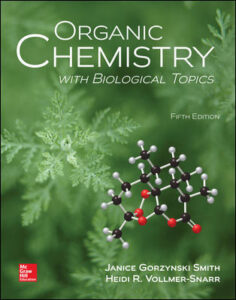Description
Test Bank For Organic Chemistry With Biological Topics 5th Edition By Janice Smith
Chapter 06 Test Bank: Understanding Organic Reactions
Student: ___________________________________________________________________________
1. Which of the following statements about substitution reactions is true?
A. Substitution reactions involve bonds.
B. Substitution reactions involve bonds.
C. One bond breaks and another forms at a different carbon atom.
D. One bond breaks and another forms at the same carbon atom.
2. What kind of reaction does the conversion of A to B represent?
A. Addition reaction.
B. Substitution reaction.
C. Elimination reaction.
D. Acid-base reaction.
3. Which of the following statements about elimination reactions is true?
A. Two bonds are broken.
B. Two bonds are formed.
C. Two bonds are broken.
D. Two bonds are formed.
4. What kind of reaction does the conversion of A to B represent?
A. Addition reaction.
B. Elimination reaction.
C. Substitution reaction.
D. Oxidation-reduction reaction.
5. Which of the following statements about addition reactions is true?
A. Two bonds are formed.
B. Two bonds are broken.
C. Two bonds are formed.
D. One bond is formed.
6. What kind of reaction does the conversion of A to B represent?
A. Acid-base reaction.
B. Elimination reaction.
C. Substitution reaction.
D. Addition reaction.
7. Which of the following statements about bond breaking is true?
A. Homolysis and heterolysis require energy.
B. In homolysis, the electrons in the bond are divided unequally.
C. In heterolysis, the electrons in the bond are divided equally.
D. Homolysis generates charged intermediates.
8. Which of the following statements about bond breaking is not true?
A. Homolysis generates uncharged reactive intermediates with unpaired electrons.
B. Homolysis require energy but heterolysis does not require energy.
C. Heterolysis generates charged intermediates.
D. Heterolysis involves unequal sharing of bonding electrons by atoms.
9. Which of the following statements is true?
A. Ionic intermediates are formed in radical reactions.
B. Radicals are intermediates in polar reactions.
C. Carbocations are electrophiles.
D. Radicals are nucleophiles.
10. Which of the following statements is not true?
A. In polar reactions, a nucleophile reacts with an electrophile.
B. Carbocations are electrophiles.
C. Carbanions are nucleophiles.
D. A half-headed curved arrow shows the movement of an electron pair.
11. Which of the following statements is not true?
A. Bond breaking is endothermic.
B. The bond dissociation energy for bond breaking is always negative.
C. Bond making is exothermic.
D. The bond dissociation energy for bond formation is always negative.
12. Which of the following statements is true?
A. Bond dissociation energies increase down a column of the periodic table.
B. When H is positive, more energy is released in forming bonds than is needed to break bonds.
C. When H is negative, more energy is needed to break bonds than is released in forming bonds.
D. Bond dissociation energies decrease down a column of the periodic table.

Reviews
There are no reviews yet.